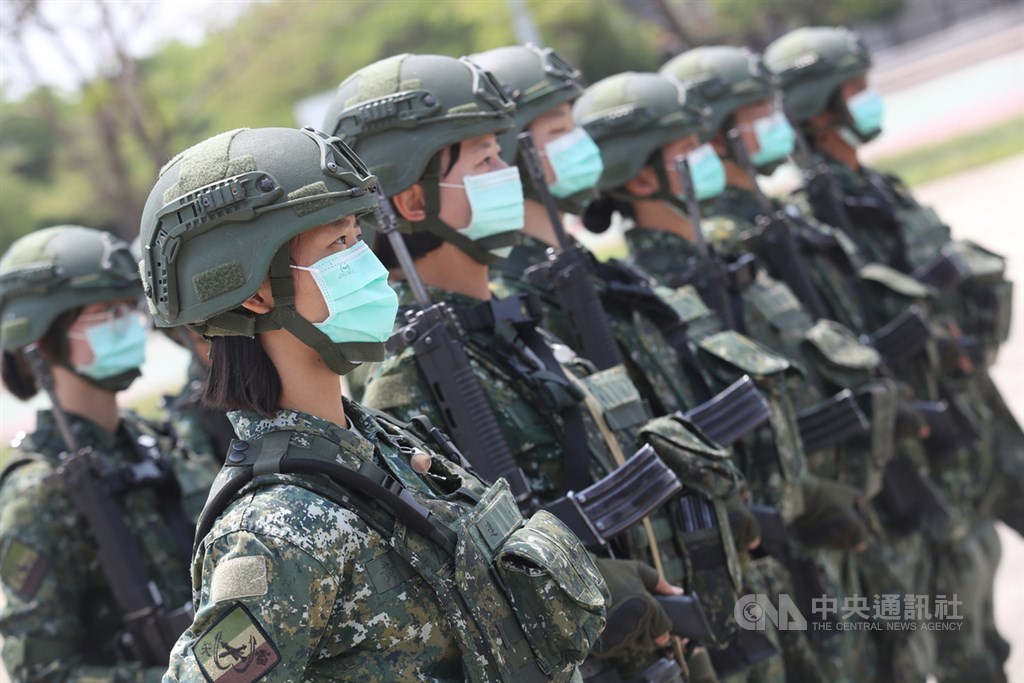
The ability to sink Chinese warships armed with surface-to-air missiles is critical to defending Taiwan, the Air Force’s top officer for the Pacific said Tuesday.
“We need better weapons to attrit those ships,” Gen. Kenneth Wilsbach said. He noted that China’s angry response to then-House Speaker Nancy Pelosi’s (D-Calif.) visit to Taiwan last summer included encircling Taiwan with warships as a demonstration of its anti-access, area denial capability.
“One thing that people often don’t think about with respect to air superiority is weapons to be able to kill ships,” Wilsbach said, speaking during an online session with the Air Force Association’s Mitchell Institute.
He also advocated for advanced radars positioned east of Taiwan.
He pointed to Russia’s problems in Ukraine, both in logistics and in the ground battle since it lacks superiority in the air. He added that an amphibious invasion, which China would have to undertake against Taiwan, is far more difficult than crossing a land border.
Air superiority, “which wasn’t there, resulted in so much loss of life,” he said. Wilsbach estimated Russian casualties at 100,000 since the war began in February 2022.
Wilsbach said that if the Pacific Air Forces had an additional dollar, he’d spend it on air superiority. He mentioned more F-35 Lighting II Joint Strike Fighters that allies Japan and Australia also fly, advanced semi-autonomous drones similar to Canberra’s MQ-28 Ghost Bat, the stealthy B-21 bomber and better aerial intelligence surveillance with the E-7 Wedgetail as systems to meet that goal. Further out would come the Next Generation Air Dominance fighter, a sixth-generation manned aircraft to succeed the F-22.
Although China’s leadership has “a hard time getting past their obsession with Taiwan,” Wilsbach said he doesn’t think China wants to engage in this fight. “Certainly, Taiwan doesn’t,” he added. He said attrition in any conflict with China would reach levels on all sides “more closely paralleling World War II.”
To deter China’s ambitions, the Air Force “is looking for as many airfields where we can disperse the force” and locations to pre-position equipment and fuel across the Pacific. The command is also addressing “the tyranny of distance” problem that the region poses for logistics to continue operations after an attack. Wilsbach highlighted American fighter jets returning to Clark Air Base in the Philippines as an example of dispersed operations. He noted that this was the first time fifth-generation F-22 stealth fighters had landed there. The two planes belong to the 525th Fighter Squadron at Joint Base Elmendorf-Richardson, Alaska.
The landings demonstrate the impact of the expanded treaty basing arrangements that the U.S. has with the Philippines. Rehabilitation started on runways at Baca as part of the agreement covering three other installations to expand U.S. presence in the South China Sea, USNI News reported earlier this week.
Wilsbach said the Fiscal Year 2023 budget has provided money “to expand runways, ramp space and weapons and fuel storage” to a more dispersed force.
Like the Marine Corps and Navy, the Air Force is looking to spread its operations over wider areas under its Agile Combat Employment program. Wilsbach added that Japan and Australia are distributing their forces to different locations to complicate any enemy’s attack planning. The Air Force is also working with the Army on missile and hypersonic defenses for dispersed operations.
“They realize with precision guided munitions you’re not going to be able to be based [on] a very large base when attacked” and continue to operate as before. He said there is funding in the FY 2024 budget to continue developing solutions for those attacks, including rapid runway repair. He mentioned a quick-drying concrete that allows them to be “ready for operations in three hours.”
“Construction, that’s happening. Prepositioning, that’s happening,” Wilsbach said.
“Allies and partners are very interested” in information sharing about their capabilities and available assets. He said they bring significant electronic warfare capabilities and cyber and space strengths to a potential conflict.
This sharing among allies and with the other services extend to exercises like COPE North. This year’s drill involves the American, Japanese and Australian air forces operating from a number of bases, as well as aircraft from France.
“Exercising on a very frequent basis helps us to be interoperable,” he said.





